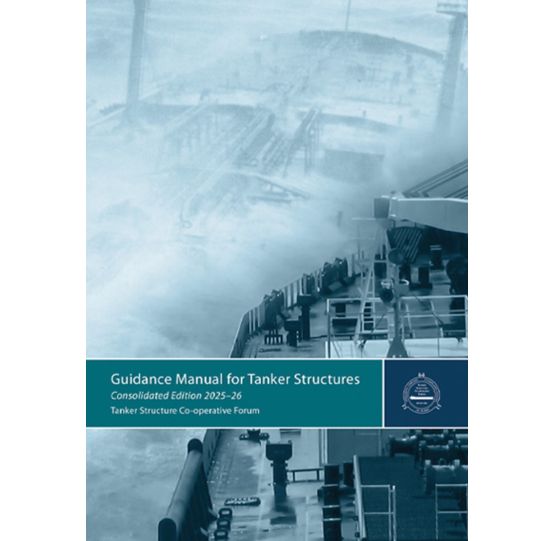Guidance Manual for Tanker Structures – Consolidated Edition 2025–26
This consolidated edition combines various sources of information on surveys, maintenance and repairs of tanker structures into one guidance manual. This information is necessary for assessing and monitoring the condition of in-service ballast tanks, cargo tanks and other tanker structures.
While the original manual primarily addressed the conventional single hull tanker, this revised edition includes 'IACS Unified Requirements (UR) Survey and Certification: Z10.4 Hull Surveys of Double Hull Oil Tankers' (Rev.18 Feb 2023), where changes introduced in Rev.18 are to be uniformly applied by IACS Societies for surveys commenced on or after 1 July 2024. The guidance also includes updated information on safety and access during surveys, including the updated 'IACS Recommendation No. 72: Confined Space Safe Practice Rev.4' (Jan 2025).
The guidance manual provides comprehensive guidance and information on IACS and owner's surveys, as well as on technical maintenance and repair. It includes guidance on structural defects, corrosion in tank spaces, fatigue and other survey procedures such as thickness measurement, which is important in monitoring.
TSCF
The Tanker Structure Co-operative Forum (TSCF) is an informal technical body whose membership is voluntary and comprised of Oil Companies, Independent Owners/Operators and Classification Societies who will actively contribute to the TSCF'S Mission.
The mission of the TSCF is to advance maritime safety through improvements in the design and maintenance of tanker structures. This is achieved by sharing technical knowledge and experience in order to gain a better understanding of the safety performance of tanker structures in service. Specific topic areas of interest include corrosion, structural defects, inspection procedures, and criteria for determining renewal of damaged or corroded structure.
The TSCF is committed to sharing accumulated experience on tanker structures with the marine industry. This is achieved through prompt public release of technical manuals and information papers, and proceedings of TSCF Shipbuilder's Meetings.
http://www.tscforum.org/AboutTSCF/interim.aspx


